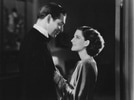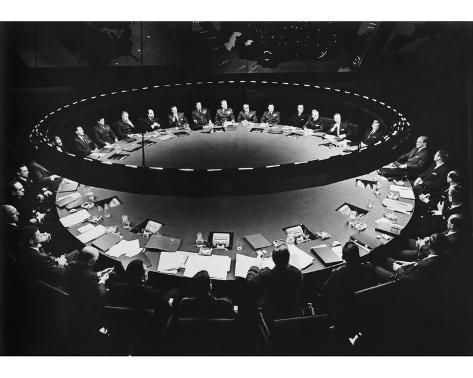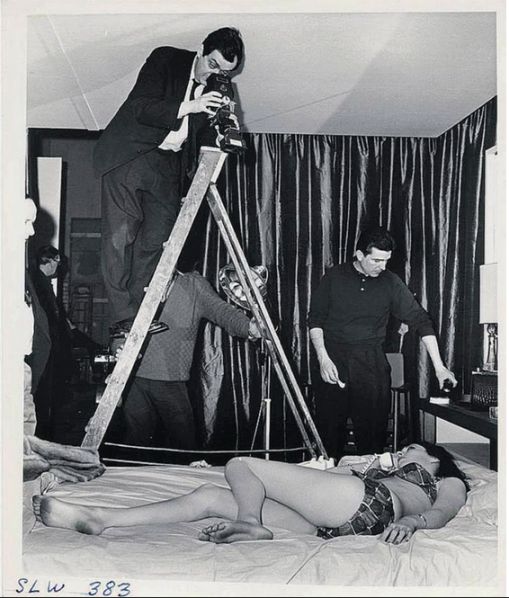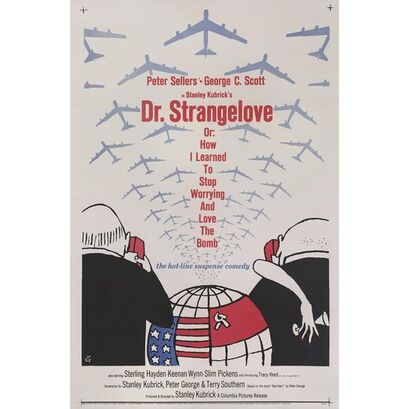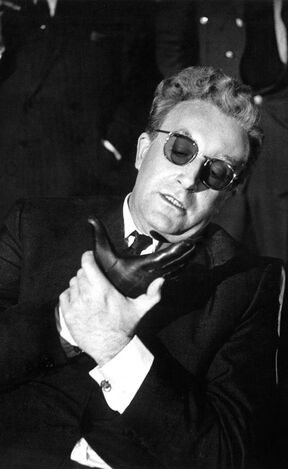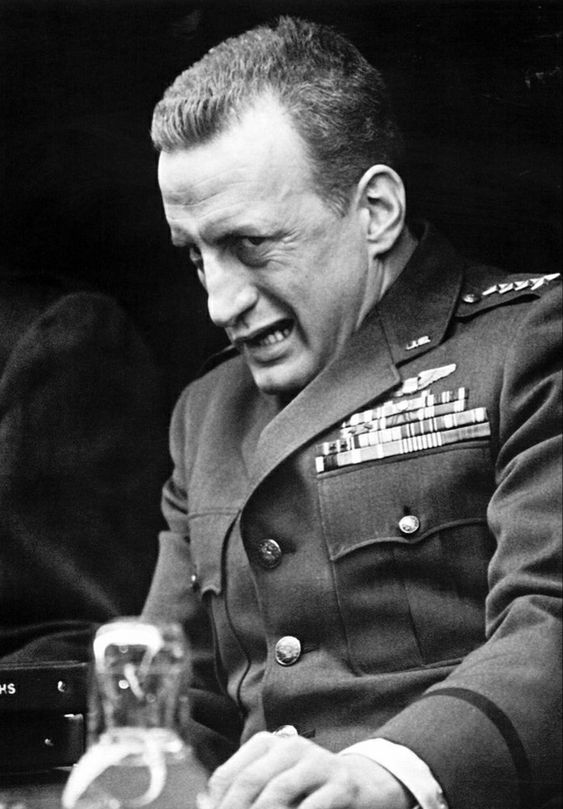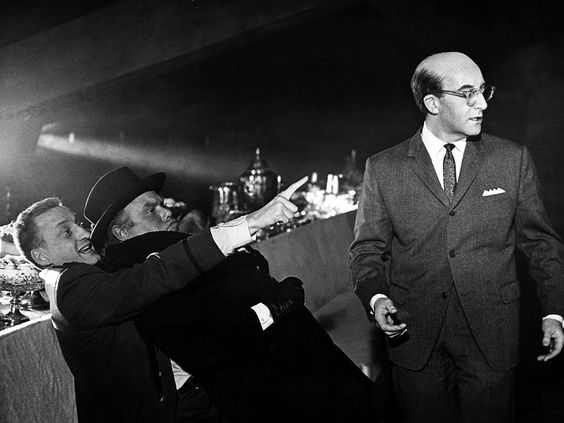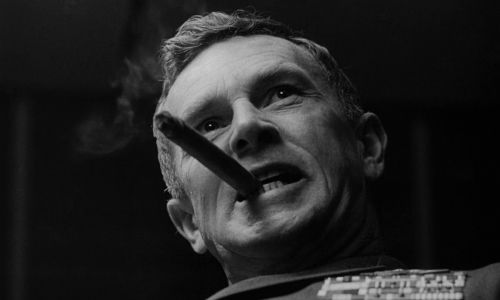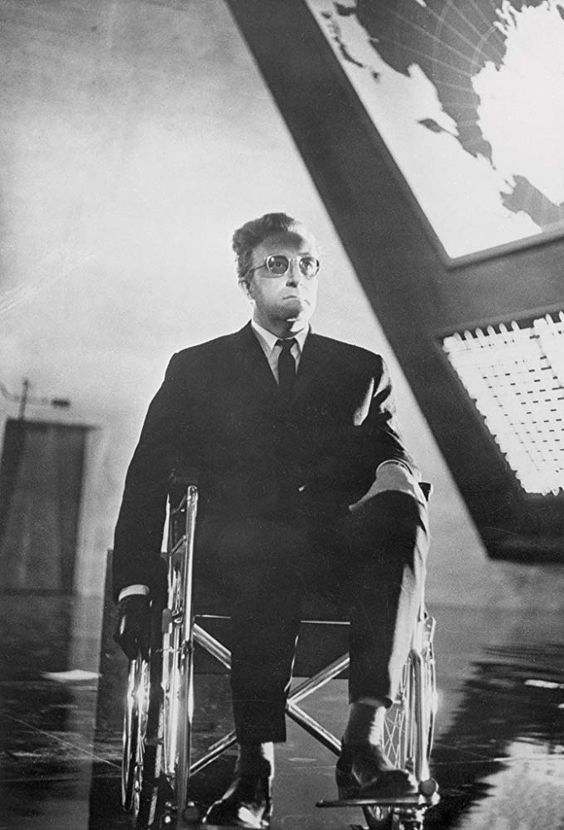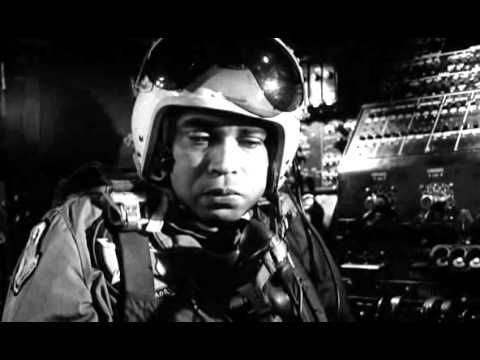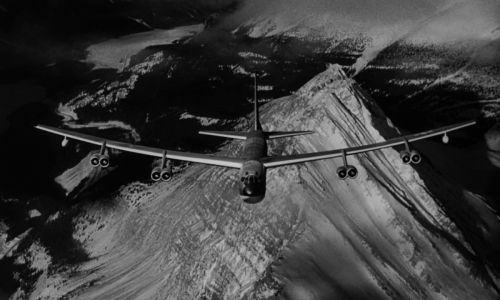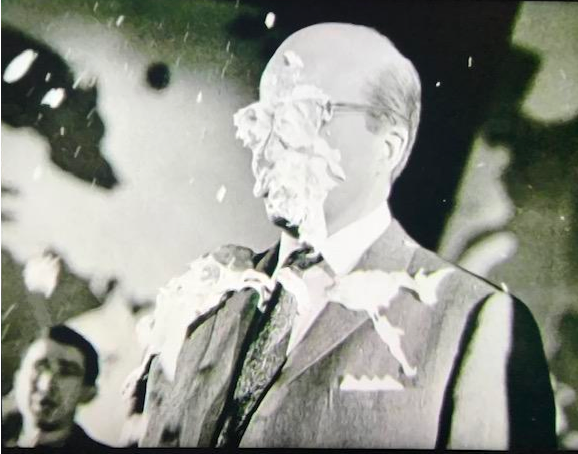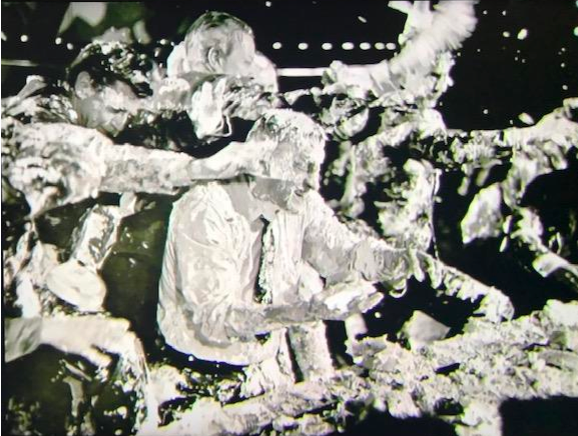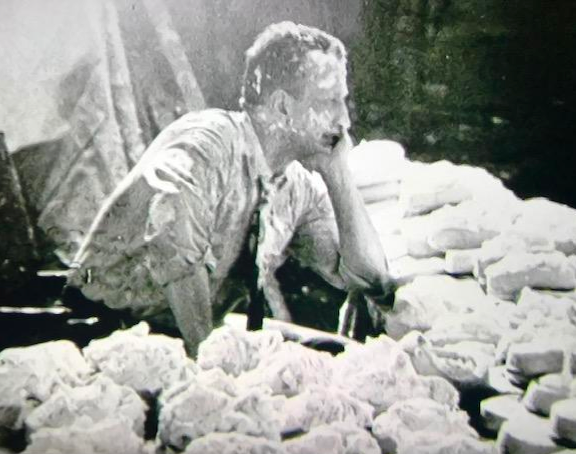Dr. Strangelove: or How I Learned to Stop Worrying & Love the Bomb Introduction (Beyond the Bay)
Hello & welcome to this week’s featured film in our continuing Beyond the Bay virtual Film Series. This week I will be introducing Stanley Kubrick’s Dr. Strangelove: Or How I Learned to Stop Worrying & Love the Bomb. My Name is Kevin Maher & I’m a member of the Programming committee for The Bay Theatre in Suttons Bay, Mi. Dr. Strangelove was released in 1963 by Columbia Pictures and stars Peter Sellers, George C. Scott, Sterling Hayden & Slim Pickens. The black comedy tells the story of a rogue general who unleashes nuclear weapons on the Soviet Union & the struggle by military & political leaders to stop the destruction.
Any discussion of Dr. Strangelove has to put into perspective the time in which the film was released. The early ‘60’s were the height of the Cold War, with the Berlin Crisis of 1961 & the Bay of Pigs incident in 1962. Tensions between the Soviet Union & the United States were extremely high, yet Kubrick set about to make a black comedy satirizing the very idea that nuclear deterrence was at the heart of our government’s policy & that a fail safe protocol would shield us from any rogue actor. The mere idea that comedy could be drawn from such dire circumstances was beyond the scope of imagination, yet Kubrick forged ahead.
Today, Stanley Kubrick, who died in 1999, just days after creating the rough cut for his final film, Eyes Wide Shut, is viewed as an artistic genius and one of the greatest filmmakers of all time. In his career he directed just 12 feature films, but was nominated for a Best Director Oscar for 4 of them. His meticulous attention to detail was born in his early passions of photography & chess. When he sold his first photograph to Look magazine at the age of 16 & dropped out of school at 17, Kubrick began his evolution into a filmmaker and was directing his first mainstream feature by 28 & the epic Startacus before he was 30. As was the case through his entire life, Kubrick would obsess on a topic until he felt he was an expert, then proceed with a project.
Any discussion of Dr. Strangelove has to put into perspective the time in which the film was released. The early ‘60’s were the height of the Cold War, with the Berlin Crisis of 1961 & the Bay of Pigs incident in 1962. Tensions between the Soviet Union & the United States were extremely high, yet Kubrick set about to make a black comedy satirizing the very idea that nuclear deterrence was at the heart of our government’s policy & that a fail safe protocol would shield us from any rogue actor. The mere idea that comedy could be drawn from such dire circumstances was beyond the scope of imagination, yet Kubrick forged ahead.
Today, Stanley Kubrick, who died in 1999, just days after creating the rough cut for his final film, Eyes Wide Shut, is viewed as an artistic genius and one of the greatest filmmakers of all time. In his career he directed just 12 feature films, but was nominated for a Best Director Oscar for 4 of them. His meticulous attention to detail was born in his early passions of photography & chess. When he sold his first photograph to Look magazine at the age of 16 & dropped out of school at 17, Kubrick began his evolution into a filmmaker and was directing his first mainstream feature by 28 & the epic Startacus before he was 30. As was the case through his entire life, Kubrick would obsess on a topic until he felt he was an expert, then proceed with a project.
As the 1960’s rolled around Kubick was transfixed by Nuclear holocaust and read no fewer than 50 books on the subject before his producing partner, James Harris, brought him the novel Red Alert, by Peter George. Harris & Kubrick completed a dramatic screenplay from the book, but Harris left the partnership to pursue his own project, leaving Kubrick to dissect & remake the film into a darker, but highly comedic satire. Enlisting the help of novelist & social commentator Terry Southern, the project moved towards absurdity that included extraterrestrials, among other far out plot points. The pair was able to rein in most of the craziest ideas, but based their writing on Kubrick’s daily question to Southern of what was the most ridiculous thing any character could say as the basis for the dialogue. Southern was credited with adding a 60’s hipness to the script, as well as the absurd charater names, among other devices, in the Oscar nominated screenplay.
Kubrick long had Peter Sellers penciled in for 4 roles in the film. Columbia Pictures, in fact, insisted Sellers participate & play multiple characters, based on his performance in Kubrick’s Lolita. Sellers’ improvisational skills lent added depth & humor to his portrayals of Group Capt. Lionel Mandrake, President Merkin Muffley & Dr. Strangelove, but the 4th character was scrubbed after an on-set accident & Sellers discomfort in developing a Texas drawl. Originally, Sellers was expected to play Major King Kong, as well, but bowed out, allowing for the iconic performance by Slim Pickens. Kubrick had seen both George C. Scott & James Earl Jones in a Central Park performance of The Merchant of Venice, giving Jones his screen debut as Lt. Zogg. The notoriously acerbic Scott was placated on set by Kubrick’s domination on the chess board, but was never happy with his performance, thinking it too “over the top” for the subject matter. The final major character, General Ripper, was a coup, getting Sterling Hayden to come out of retirement for his first performance in more than 6 years.
Kubrick long had Peter Sellers penciled in for 4 roles in the film. Columbia Pictures, in fact, insisted Sellers participate & play multiple characters, based on his performance in Kubrick’s Lolita. Sellers’ improvisational skills lent added depth & humor to his portrayals of Group Capt. Lionel Mandrake, President Merkin Muffley & Dr. Strangelove, but the 4th character was scrubbed after an on-set accident & Sellers discomfort in developing a Texas drawl. Originally, Sellers was expected to play Major King Kong, as well, but bowed out, allowing for the iconic performance by Slim Pickens. Kubrick had seen both George C. Scott & James Earl Jones in a Central Park performance of The Merchant of Venice, giving Jones his screen debut as Lt. Zogg. The notoriously acerbic Scott was placated on set by Kubrick’s domination on the chess board, but was never happy with his performance, thinking it too “over the top” for the subject matter. The final major character, General Ripper, was a coup, getting Sterling Hayden to come out of retirement for his first performance in more than 6 years.
Having seen a version of the script, the US military refused to either condone or assist in the production of the film, but were later shocked & amazed at the level of detail recreated in the interior of the top-secret B-52 bomber. The completely fictitious war room set, which measured 130’ x 100’ x 30’ feet high had a high gloss floor that forced the actors to wear wool coverings over their shoes to avoid scratches appearing on camera. The war room was realistic enough, however, for Ronald Reagan to ask of its location when he first toured the White House after his election. The only other significant set, Ripper’s office, was deliberately made to look like a bland industrial office building to contrast with the other 2 sets.
Production began in October of 1962, under the working title of “Two Hours to Doom”, but was quickly halted for Kubrick to work on a different ‘vision’ for the film that better exploited Sellers’ talents. When shooting began in earnest in November, Kubrick was working from revisions he & Southern had implemented, including the new title: Dr. Strangelove: or How I Learned to Stop Worrying & Love the Bomb. A second unit crew shot more than 28,000 miles of aerial footage used for rear projection of the bomber flying over cold weather terrain. Primary shooting lasted 15 weeks at London’s Shepperton Studios at a cost of $2 million.
From its initial title sequence of a mid-air bomber refueling, with “Try a Little Tenderness” playing underneath, Kubrick made a conscious choice to include phallic imagery throughout the picture to indicate a testosterone fueled decision tree that would lead to destruction. Ripper’s insistence of the importance of ‘precious bodily fluids’, Turgidson’s ‘modest acceptable casualties of 10-20 million’ & Kong’s blind obedience in the face of absurd orders, paint a consistent pattern of the oxymoronic phrase “military intelligence” & lays the groundwork for the pitch black humor of the film. Kubrick’s attention to the finest details is not limited to the razor sharp dialogue, however. Pay close attention to notebooks, girly magazines & survival kits for layered clues inherent in military thinking and the chain of command.
Production began in October of 1962, under the working title of “Two Hours to Doom”, but was quickly halted for Kubrick to work on a different ‘vision’ for the film that better exploited Sellers’ talents. When shooting began in earnest in November, Kubrick was working from revisions he & Southern had implemented, including the new title: Dr. Strangelove: or How I Learned to Stop Worrying & Love the Bomb. A second unit crew shot more than 28,000 miles of aerial footage used for rear projection of the bomber flying over cold weather terrain. Primary shooting lasted 15 weeks at London’s Shepperton Studios at a cost of $2 million.
From its initial title sequence of a mid-air bomber refueling, with “Try a Little Tenderness” playing underneath, Kubrick made a conscious choice to include phallic imagery throughout the picture to indicate a testosterone fueled decision tree that would lead to destruction. Ripper’s insistence of the importance of ‘precious bodily fluids’, Turgidson’s ‘modest acceptable casualties of 10-20 million’ & Kong’s blind obedience in the face of absurd orders, paint a consistent pattern of the oxymoronic phrase “military intelligence” & lays the groundwork for the pitch black humor of the film. Kubrick’s attention to the finest details is not limited to the razor sharp dialogue, however. Pay close attention to notebooks, girly magazines & survival kits for layered clues inherent in military thinking and the chain of command.
As Kubrick edited Dr. Strangelove & planned for the premiere of his film on November 22, 1963, world events intervened with the assassination of John F. Kennedy and the film’s release was delayed. Columbia Pictures decided against a preview showing of the film and quietly released it in a few theaters to qualify for Oscar voting before releasing the film on January 30th, 1964. Minor editing changes, brought about by the president’s assassination, were made, including a final scene which was eventually removed in its entirety from the release print. In the scene, the War room devolves into a pie fight after the Russian ambassador is accused of hiding a recording device on his person. The scene is often referred to as ‘the greatest scene never seen’, but all involved agreed that it moved the film into slapstick that was out of place with the rest of the film.
After Kubrick’s experience of working for Michael Douglas making Spartacus, Kubrick insisted on complete control over all his films, including the promotional plans. For Dr. Strangelove he compromised with the studio, however, to create 2 separate campaigns, one for large urban centers & one for suburban & rural markets. Reviews were decidedly mixed, but the box office returns were strong with more than $9 million for 1964, placing it 12th for the year. In addition to the screenplay, Kubrick was nominated for Best Director & Best Picture & Sellers was nominated for Best Actor. Sadly, the film won no Oscars, but did win awards from the Writers Guild & the New York Critics Circle.
After Kubrick’s experience of working for Michael Douglas making Spartacus, Kubrick insisted on complete control over all his films, including the promotional plans. For Dr. Strangelove he compromised with the studio, however, to create 2 separate campaigns, one for large urban centers & one for suburban & rural markets. Reviews were decidedly mixed, but the box office returns were strong with more than $9 million for 1964, placing it 12th for the year. In addition to the screenplay, Kubrick was nominated for Best Director & Best Picture & Sellers was nominated for Best Actor. Sadly, the film won no Oscars, but did win awards from the Writers Guild & the New York Critics Circle.
Dr. Strangelove: or How I Stopped Worrying & Love the Bomb stands alone as darkest of black comedies & is a testament to its single-minded creator, Stanley Kubrick. It has stood the test of time because it paints a realistic situation in the most absurd fashion, wringing comedy from tragedy & belly laughs from insanity. Kubrick would go on to create several more masterpieces, including 2001: A Space Odyssey, The Shining & Full Metal Jacket, but Dr. Strangelove is the film that has most permeated the public consciousness because it hits the closest to home, it has genius level performances from Peter Sellers & nothing could ever beat the image of a cowboy riding a bomb into oblivion! Pease enjoy watching Dr. Strangelove: or How I Stopped Worrying & Learned to Love the Bomb.
